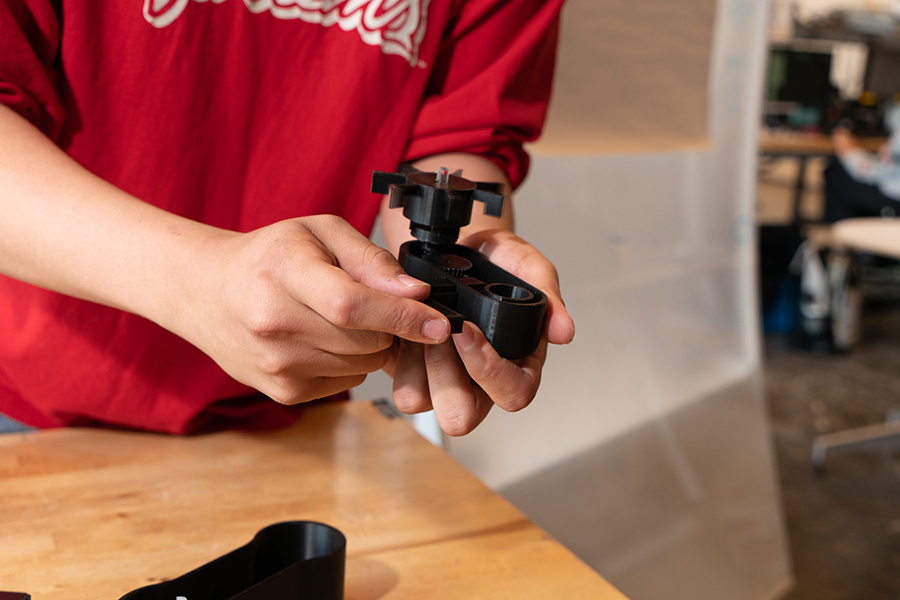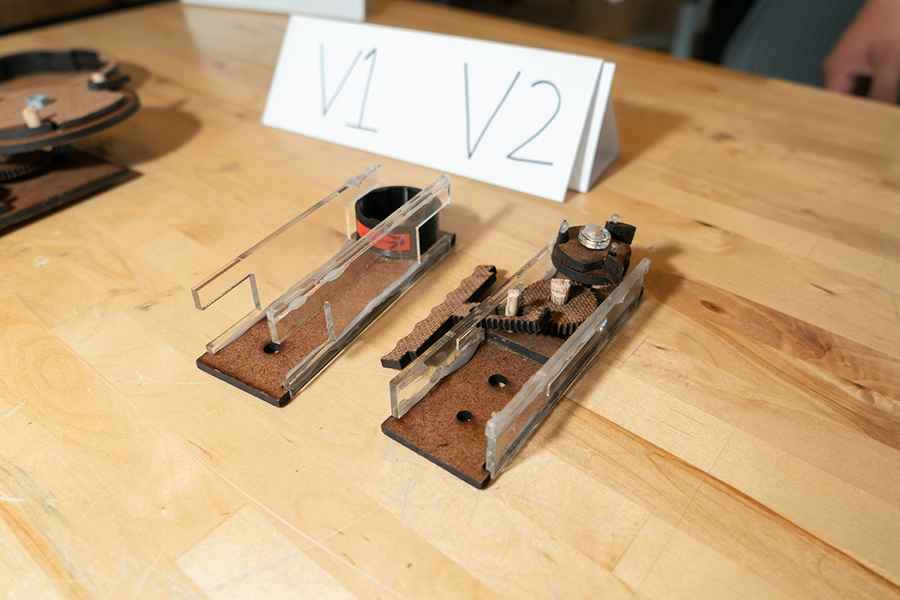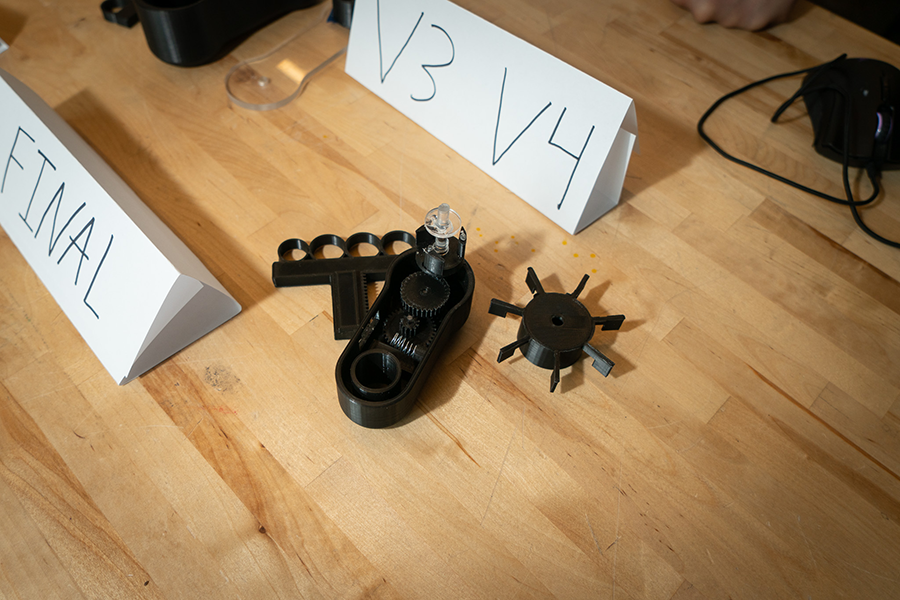Engineering for fun
Sergio Rodriguez turned his passion for small-scale design into an independent study and an internship opportunity.
For Sergio Rodriguez, part of the appeal of mechanical engineering is the broadness of the discipline, learning skills that can be applied to a multitude of projects and purposes. Rodriguez, who will complete his integrated master’s/bachelor’s (IMB) program in December, spent last summer interning at DENIOS, a German environmental protection firm, to produce large-scale devices like flood barriers and lockers to store hazardous materials. This summer, he’ll be working on projects of a smaller scale—in small-scale toy design at Mattel, the manufacturer behind iconic brands like Barbie and Hot Wheels.
He got a lot of useful experience during the spring semester with an independent study, which he devoted to designing a fidget toy. The concept came about during a conversation with a friend, who pitched Rodriguez a “million-dollar idea”: create a fidget toy with a satisfying grip that triggers a fan to spin, which you could then brush your fingers against, incorporating two sensory components.
With the guidance of his faculty supervisor, Diana Haidar, an associate professor of mechanical engineering who serves as faculty director of Tech Spark, Rodriguez has carried the fidget toy through several phases of development, production, and refinement. Though it might sound tedious to reimagine a single model, Rodriguez relishes the chance to tinker with materials and structure.
“I love creating something like a 3D model, ideating the whole design cycle and process: I have this idea, now let’s test it,” he said. “Being able to create a moving structure is what’s really cool to me. I love mechanical engineering, and, specifically, I love how mechanical components interact with each other.”
Originally, Rodriguez requested to earn six credits for the independent design, so he was expected to devote six hours per week to the project. He wound up switching to 12 credits because he was spending so much time tweaking the designs and testing new materials, even buying his own 3D printer to make updates around the clock.
Rodriguez has produced three different iterations of the product, the last of which debuted at the Mechanical Engineering Department’s Design Expo in May, which was the first time Rodriguez saw other people tinkering with the fidget toy and learning how to spin it.
The first step of the independent study was to build a proof-of-concept to understand freewheel mechanisms and gear design. Although the ultimate goal was to build something small-scale, Rodriguez began by producing a larger model out of wood sheets and dowels. Having more surface area in the first design allowed Rodriguez to easily observe the mechanics at work to determine what layout would work best as the subsequent iterations got smaller and smaller.
Being able to create a moving structure is what’s really cool to me. I love mechanical engineering and how components interact with each other.
Sergio Rodriguez, Student, Mechanical Engineering
The objective for the second design was to make a smaller model that fits in the palm of your hand, closer to the dimensions of other gadgets. Produced again using wood sheets and dowels, this iteration is shaped like the rectangular base of a handheld fan with a pairing of two gears, one larger and one smaller, to allow for faster rotations. The tiny central gear was produced with the 3D printer using plastic. The sides of the model were made of plexiglass, allowing the user to watch the gears in motion. That’s part of the appeal for Rodriguez as well, letting the user participate in the wonderment of the mechanics. Using so much wood proved its disadvantages with some wear and tear. Because of friction, the teeth on the gears became dull after frequent use. Without the sharpness of the teeth, it was harder for the shifter to connect with the gear and spin the coupler that controlled the fan.
The third iteration marked the last major change in dimensions, materials, and production methods. Here, Rodriguez made adjustments so the design was ergonomically correct and comfortable to hold. He did so by making the entire base of the model, and its large and small gears, out of plastic–a process that took several hours with a 3D printer. There is also a finger grip rack and a finger slot. To add some flair to the design, the base of the model is black while the gears are white, making it easier to appreciate how hand movements create a ripple effect in the gears, the flippers, and the free-spinning fan made from a centrifugal coupler. The plexiglass remains, giving people a clear view of the moving parts.
Ideally, Rodriguez would like to have the final product placed on his desk at Mattel as a sort of conversation piece. That way, he could talk to his colleagues about his experience taking a small-scale toy design from concept to fruition, with several iterations and adjustments in between.
“I think there’s a lot of value in engineering for fun. It’s something that you can’t do in many other industries,” he said. “I want to have fun as an engineer.”




